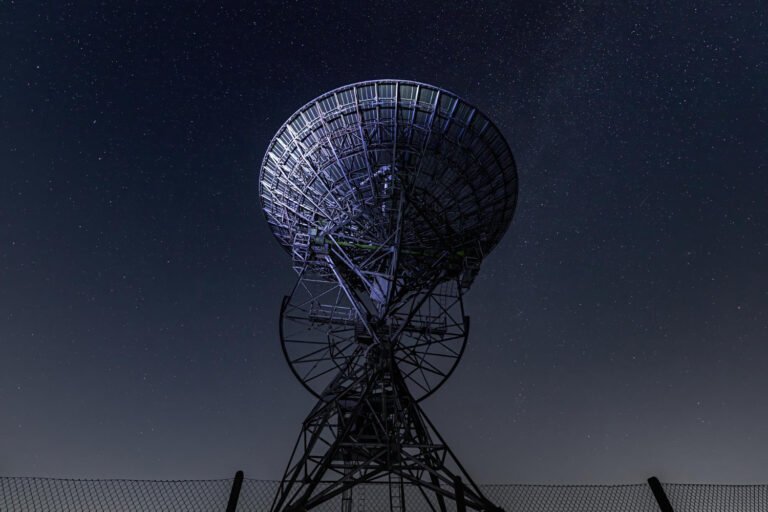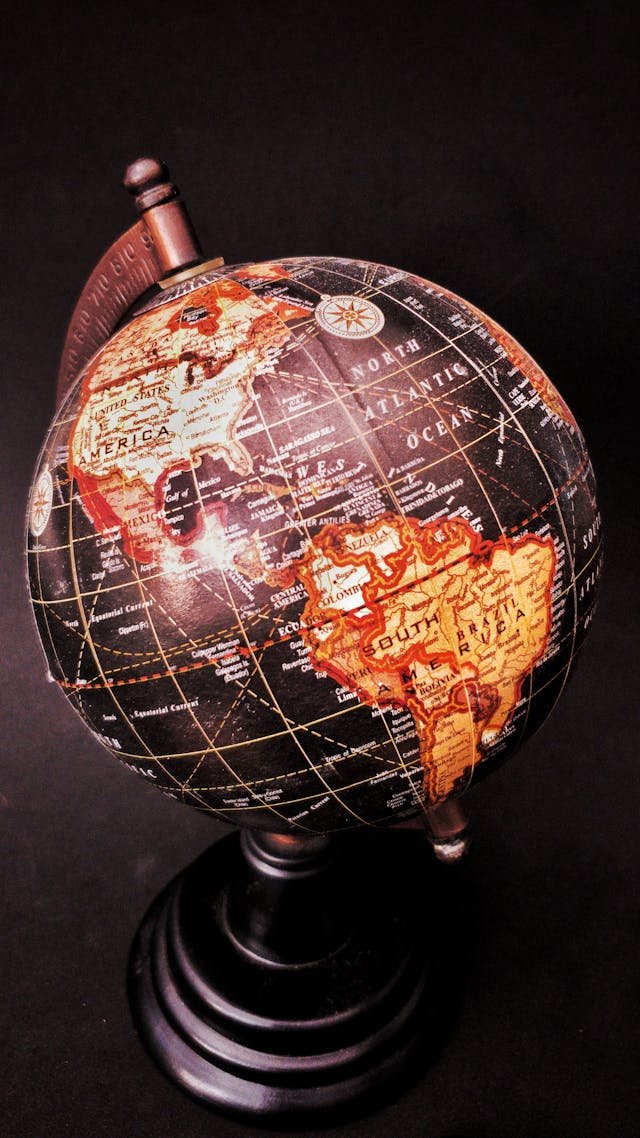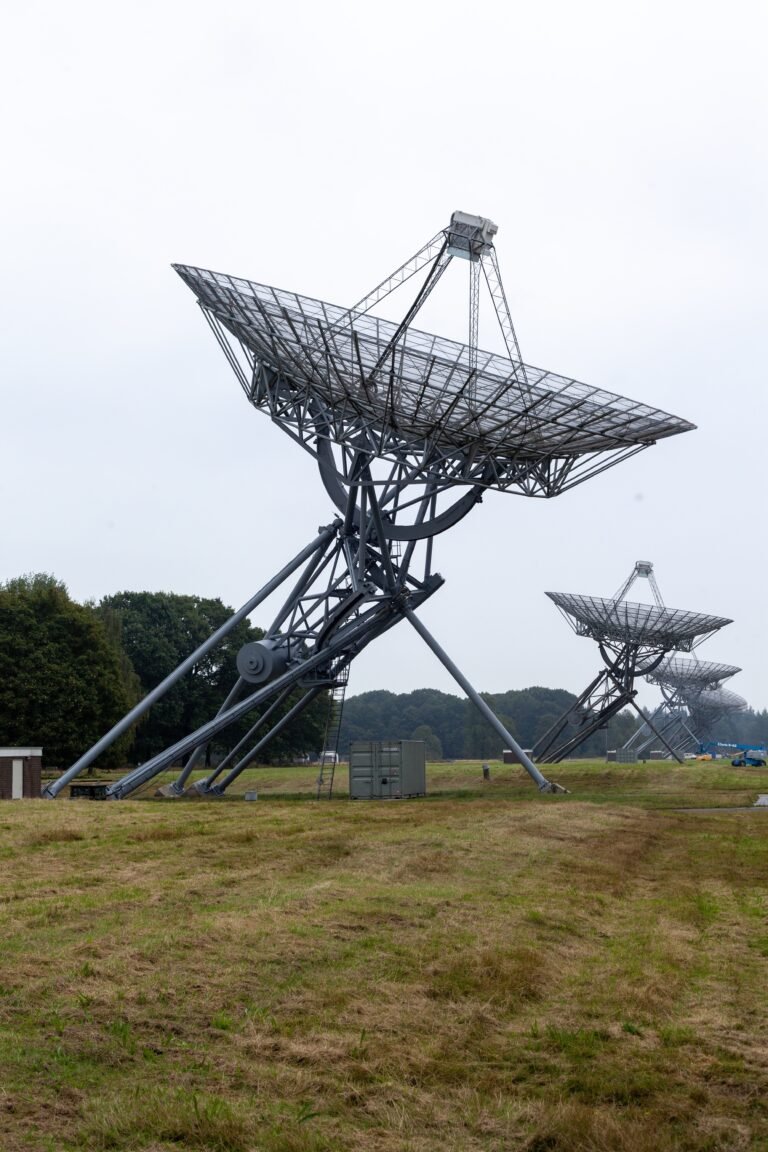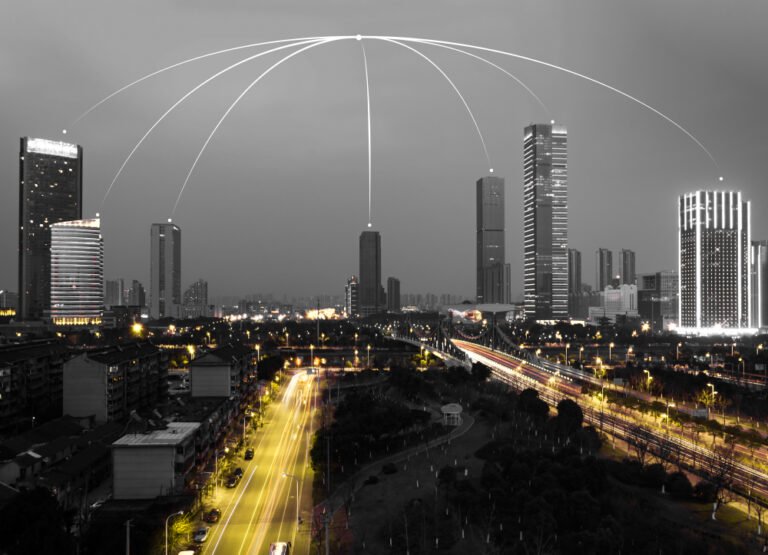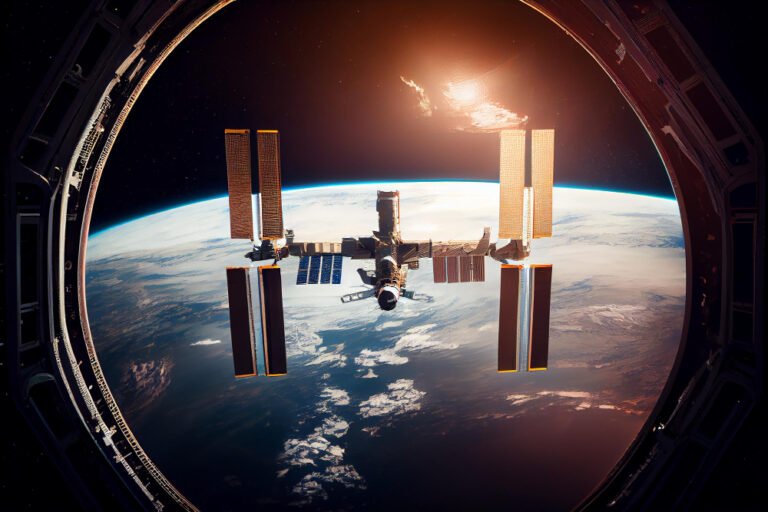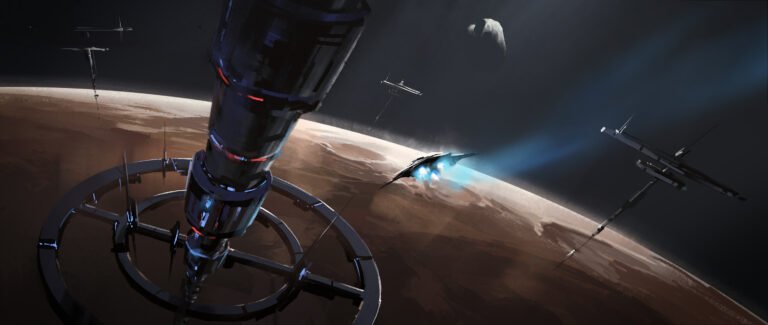The Future of Weather Forecasting with AI + Satellites

Weather forecasting is entering a new era. The classic pipeline—observations → physics-based numerical weather prediction (NWP) → post-processing → delivery—is being reshaped by two forces working together: the exploding volume and variety of satellite observations, and machine learning (ML) / artificial intelligence (AI) methods that can learn patterns, accelerate computation, and fuse disparate data streams. Combined, AI + satellites promise faster, more localized, and arguably more accurate weather forecasting at scales from the next few minutes (nowcasting) to weeks ahead. This article explains how the convergence works, surveys major technical advances and recent breakthroughs, highlights concrete operational and societal benefits, discusses key risks and limitations, and offers a practical roadmap for meteorological agencies, startups, and users through 2030

Table of Contents
1. Why satellites + AI is the right combination now
Three mutually reinforcing trends make an AI + satellite future for weather forecasting inevitable:
- Data deluge from space. Modern geostationary imagers (GOES, MTG, Himawari, Meteosat) and proliferating LEO constellations (radar, microwave sounders, GNSS radio occultation providers, cubesat sensors) deliver higher-resolution, higher-cadence observations than ever. These data enable finer-grained, continuous views of atmospheric processes. EUMETSAT+1
- ML model advances. New AI architectures—graph neural networks, huge convolutional transformers, encoder-decoder temporal models—can capture complex spatiotemporal dependencies and produce forecasts orders of magnitude faster than some traditional NWP systems. GraphCast and MetNet-style models are prominent examples. Google DeepMind
- Operational interest and investment. Agencies (NOAA, ECMWF, EUMETSAT), startups (Atmo, others), and research labs are actively prototyping, testing, and operationalizing hybrid AI-physics forecasts. Workshops and procurement programs signal institutional buy-in. NOAA Satellite Data
Together, these trends allow forecasts that are faster (sub-minute inference possible), more localized (sub-km nowcasts), and better at probabilistic prediction and uncertainty quantification—if we solve assimilation, validation, and governance challenges.
2. What satellite data brings to modern forecasting
Satellites are the backbone of global observation; they provide the continuous, global perspective that surface stations and radiosondes cannot. Key satellite-derived observation types that feed modern AI + forecasting systems include:
- Geostationary imagery: high cadence (minutes to sub-minute), multi-spectral radiances and derived products (cloud tops, motion vectors, lightning) from GOES, Himawari, Meteosat, and soon Meteosat Third Generation (MTG). These are crucial for nowcasting convective storms and monitoring mesoscale dynamics. EUMETSAT+1
- LEO sounders & microwave imagers: multi-angle, high-sensitivity observations for moisture and temperature profiling (critical for NWP assimilation).
- GNSS Radio Occultation (RO): precise bending-angle profiles of refractivity that provide vertical structure in temperature and moisture; commercial RO providers have grown and NOAA is increasingly purchasing RO data to supplement public datasets. Atmospheric Measurement Techniques+1
- Active sensors (radar/lidar from space): though less common than passive radiometry, spaceborne radar adds unique insights into precipitation structure.
- Lightning mappers & hyperspectral imagers: lightning and microphysical information are now available at high cadence, improving thunderstorm detection and severe-weather nowcasts.
AI models can take these heterogeneous inputs and learn complex, nonlinear mappings from observations to future states—but the most valuable gains come when AI augments, is constrained by, or is hybridized with physics-based knowledge.
3. AI breakthroughs reshaping forecasting (nowcasting → medium-range)
AI has not been a toy in meteorology for years; the field has seen several watershed advances:
- Nowcasting at fine spatial and temporal scales. Models like MetNet and MetNet-2 demonstrated probabilistic precipitation nowcasting up to 12 hours at high spatial resolution by learning directly from radar and satellite inputs. These models can run very fast and are ideal for rapid updates and ensemble-style probabilistic products. Google Research
- Medium-range forecasting with graph neural networks. DeepMind’s GraphCast showed that a large-scale graph neural network trained on reanalysis data could produce competitive 10-day global forecasts, outperforming ECMWF’s high-resolution operational system across many metrics while running orders of magnitude faster in inference. This shows AI’s potential beyond short-term nowcasting and into the medium range. Google DeepMind
- Hybrid models and emulators. Instead of replacing physics, AI can emulate expensive components of NWP (e.g., parameterizations) and run as surrogate models, enabling faster ensembles or higher-resolution runs within the same compute budget. Many agencies are exploring surrogate models to accelerate existing workflows. American Meteorological Society Journals
The practical impact: faster turnaround, the ability to run many more ensemble members for uncertainty quantification, and finer local resolution for urban-scale forecasting and impact modeling.
4. How AI and satellites are integrated in practice (data fusion & assimilation)
Integration is the hard engineering work. There are several complementary approaches:
A. Direct ML prediction from satellite chains (end-to-end)
These models take raw radiances, radar echoes, and previous fields and predict future satellite-like fields (e.g., precipitation maps, cloud motion) directly. MetNet is an example where satellite and radar inputs generate short-term precipitation forecasts without full physical assimilation.
B. ML for observation operators and bias correction
ML can learn complex, nonlinear observation operators that map model state to observed radiances, improving assimilation of satellite radiances into NWP. This reduces observation-model mismatch and enables better use of hyperspectral and multi-angle sensors.
C. Hybrid physics-ML assimilation loops
AI augments the data assimilation step by improving short-term analyses (better background error modeling, faster iterative solvers), enabling higher-quality initial conditions for NWP runs. This is essential because NWP remains the gold standard for many medium-range and global forecasts.
D. Surrogate model emulators & model reduction
AI can emulate expensive sub-processes (convection schemes, radiation) so that NWP cores can run faster or at higher effective resolution. Emulators are trained on high-fidelity simulations and then used in operational models.
E. Federated & distributed learning for multi-source data
Satellites and ground networks are owned/operated by many entities. Federated learning can let organizations share model improvements without raw data exchange—useful where data sovereignty or cost prevents centralized pooling.
Successfully blending these approaches requires careful handling of scales (temporal and spatial), uncertainty propagation, and domain-aware architectures.
5. Operational examples and recent breakthroughs
A few concrete milestones show AI + satellite forecasting moving from research to operations:
- GraphCast (DeepMind + ECMWF comparison). GraphCast (2023) outperformed traditional operational NWP across many metrics for up to 10 days in tests, illustrating AI’s power to capture global dynamics rapidly. This breakthrough sparked institutional interest and plans to hybridize AI with operational workflows. Google DeepMind
- MetNet family for nowcasting. Google Research’s MetNet and MetNet-2 models produced fast, high-resolution precipitation forecasts up to 12 hours ahead—particularly valuable for convective precipitation and flash-flood risk. Google Research
- Agency & policy movement. NOAA and OSTP have convened workshops focused on AI and weather prediction, signaling active coordination between research and operational agencies. NOAA’s Commercial Data Program is expanding procurement of GNSS-RO and other commercial satellite data to enrich models. NOAA Satellite Data
- Commercial offerings. New entrants (e.g., startups that fuse multi-satellite feeds and ML modeling) are producing tailored, high-frequency forecasts for energy, shipping, and insurance—showing business demand for faster, localized forecasts. Industry reporting highlights at least one commercial player being adopted by national services for operational use. TIME
These examples show that AI is not just experimental: it can deliver speed and skill advantages, especially when combined with richer satellite inputs.
6. What the 2025–2030 roadmap looks like (technical & policy trends)
2025–2026: hybrid trials and expanded commercial data access
- Agencies will run hybrid testbeds where AI modules accelerate parts of operational chains (data assimilation, ensemble generation). Procurement of commercial radio occultation and other LEO data will expand to improve vertical profiling. Office of Space Commerce
2026–2028: operationalization and standardization
- Proven AI components (nowcasting, emulators) enter production services with clear validation regimes and operational SLAs. Standards bodies and WMO working groups will publish guidance on evaluation metrics, data formats, and model transparency.
2028–2030: widespread AI-augmented forecasting and service diversification
- AI-powered forecasting becomes common for medium-range and short-term products; ensemble sizes grow due to computational speedups; custom vertical forecasts (agriculture, urban flood, energy) proliferate. On-orbit processing and edge compute enable faster satellite-to-insight loops for some applications.
Key enablers across this timeline: better access to diverse satellite data, robust validation and explainability frameworks, and policies that support data-sharing while protecting sovereignty.
7. Risks, validation, and trust: what we must watch for
AI offers great upside, but also important caveats:
A. Overfitting to historical climate / non-stationarity
AI models trained on historical reanalysis may struggle as climate change alters the statistics of extremes. Models must incorporate physical constraints, continual retraining, and stress-testing for novel events.
B. Interpretability and failure modes
Black-box models can fail unpredictably (e.g., during rapid hurricane intensification events). The community must prioritize robust uncertainty quantification, explainability tools, and hybrid designs where physics acts as a guardrail.
C. Data latency and ground-segment bottlenecks
Real-time value depends on low-latency satellite feeds and rapid ingestion pipelines. Operational systems must invest in ground-station networks, edge processing, and resilient communications to prevent delay-induced forecast degradation.
D. Validation standards and institutional trust
Operational uptake requires rigorous independent verification—standards for metrics, benchmark datasets, and open evaluation are essential. GraphCast and others showed promise, but agencies will want reproducible, audited metrics before shifting critical operational responsibility.
E. Equity and language/access gaps
Tools for translating alerts and delivering localized action guidance must be maintained; recent examples where AI-enabled translations were cut show the downstream societal risk if operational support is not sustained. AP News
Addressing these risks will be as important as the models themselves.
8. Practical recommendations for agencies, startups, and cities
For national meteorological services (NMS) & agencies
- Run hybrid testbeds now. Use AI to accelerate specific sub-tasks (nowcasting, bias-correction) and benchmark them against operational pipelines.
- Invest in diverse satellite data (including commercial RO and LEO). More vertical structure data improves initialization and AI training. Office of Space Commerce+1
- Publish open benchmarks & share skill metrics. Encourage reproducibility and third-party evaluation.
- Plan for continual retraining & climate non-stationarity. Create workflows for ongoing model updates and extreme-event stress tests.
For startups & commercial providers
- Focus on niche verticals first (energy, aviation, insurance). These sectors pay for higher-resolution, actionable probabilistic forecasts.
- Partner with NMS for validation & trust. Co-development and certification help scale adoption.
- Design for explainability & uncertainty reporting. Customers need not just numbers but actionable confidence bounds.
For cities & critical infrastructure operators
- Adopt AI-augmented nowcasts for urban flood and microclimate. Fast localized forecasts can dramatically improve resilience.
- Require SLAs and independent verification when procuring forecasting services.
- Invest in dissemination and multi-lingual alerting so forecasts translate into safe actions for diverse populations.
9. Related-items / Info table
| Area | What AI + Satellites improve | Near-term action |
|---|---|---|
| Nowcasting (0–6 hours) | Faster, sub-km precipitation & storm tracking | Deploy ML nowcast models fused with geostationary imagery |
| Medium-range (1–10 days) | Speed up ensembles; improve global skill | Pilot GraphCast-style emulators alongside NWP |
| Vertical profiling | Better humidity/temperature structure using GNSS-RO | Buy commercial RO feeds; integrate in assimilation |
| Disaster response | Faster insight & tailored alerts | Create low-latency ingestion & local alerting pipelines |
| Climate extremes | Rapid detection of compound events | Retrain models with extreme-focused datasets |
| Verification | Continuous evaluation with standards | Publish skill dashboards & open benchmarks |
10. FAQs (6)
Q1: Will AI replace traditional numerical weather models?
A: Not wholesale, at least not soon. AI excels at speed and pattern recognition and has shown skill up to 10 days in some tests, but NWP encodes known physics and remains critical for interpretability, rare-event extrapolation, and regulatory trust. The next decade will see hybrid systems where AI accelerates or emulates parts of NWP rather than completely replacing it. Science
Q2: How do satellites and AI reduce forecast time-to-delivery?
A: Satellites provide continuous, high-cadence observations; AI models—once trained—run inference extremely fast (seconds to minutes) compared to some NWP runs. That speed permits many more ensemble members, near-real-time updates, and delivery of ultra-fresh local forecasts. Google Research+1
Q3: Are commercial satellite data (like GNSS-RO) reliable for operational forecasting?
A: Yes—agencies like NOAA are procuring commercial RO and other data to augment public sources. These feeds are increasingly validated and integrated into operational assimilation pipelines. Office of Space Commerce
Q4: What about compute costs—are AI models cheaper?
A: AI inference can be much cheaper and faster than running full high-resolution NWP, but training large models is expensive. Operational setups often favor recurring inference costs that are modest if models are well-optimized, and hybrid approaches can reduce total compute needs. Google DeepMind
Q5: How will this change warnings for severe weather?
A: Faster, higher-resolution nowcasts and larger ensembles improve lead time and probabilistic guidance for severe events (flash floods, convective storms). But translation of improved forecasts into actionable warnings requires validated thresholds, social science, and effective dissemination channels. American Meteorological Society Journals
Q6: Can small countries and cities benefit, or is this only for wealthy nations?
A: Yes—commercial AI-augmented forecast providers and cloud-based models lower the barrier to access advanced forecasts. Moreover, international programs and data-sharing (public satellite imagery, some open models) help smaller nations adopt high-quality forecasting without building full NWP infrastructure.
11. Conclusion — faster, smarter, but human-led forecasting
AI + satellites will transform weather forecasting by giving forecasters faster tools, higher-resolution views, and richer probabilistic guidance. Breakthroughs like MetNet and GraphCast show the technical path; growing agency interest and procurement of commercial satellite data show operational demand. But success is not automatic: we need robust validation standards, hybrid physics-aware AI systems, low-latency data pipelines, and governance that addresses non-stationarity and equity. When these pieces come together, the result will be forecasts that save more lives, reduce economic loss, and give communities and industries better time to act.

